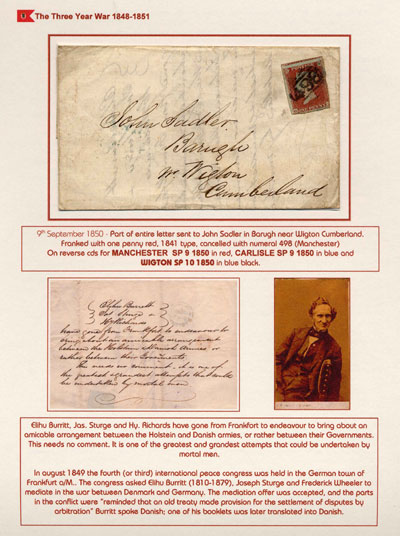The Danish Peace Academy
Holger Terp: Danish Peace History
Working paper 1
War resistance in Slesvig during the Danish-German war of 1849
 |
 |
In the “strange year” of 1848 the Danish-German three year war began68.
During the mobilisation of the army in December 1849, which needed men from Slesvig, the military police officer Leerbeck asked for help from the Haderslev country house authorities71 to announce the draft, (recorded the Danish general staff 30 years after the war)72. The country house in Haderslev declared that it could not accept the usual draft announcement, only that the parish executive officers made the draft announcement, leaving it up to each individual, whether he would co-operate or not. Then Leerbeck did not use the country houses, but himself announced the drafts in the whole of Slesvig.
Consequently not all the soldiers could be drafted at once so enlisting men became difficult as the order had to be given to nearly every man individually; and in different areas the civil servants and agitators tried to sabotage the draft pretending that the draft did not have the legitimacy of the legal authorities; even some of the persons sent out with the draft orders were arrested and enlistment campaign results were very small.
Announcement in pro-Danish newspapers resulted in most of the draft enlistment. However, some did not meet and on the other hand not a few people fearing draft enforcement by the army of Slesvig-Holstein left Slesvig for the island of Als. Thereupon the ministry of war decided, that they should be sent to the island Funen, and if they would not accept the military service during war, they had to prove to the civilian authorities that they were able to support themselves, they could take residence where they wanted.
In August 1850 the third international peace congress was held in the German town of Frankfurt a/M.. The congress asked Elihu Burritt (1810-1879), Joseph Sturge and Frederick Wheeler to mediate in the war between Denmark and Germany. The mediation offer was accepted as they were “reminded that an old treaty made provision for the settlement of disputes by arbitration”69. Burritt spoke Danish; one of his booklets was later translated into Danish70. This mediation case needs research in Danish.
New research by Professor Norbert Götz suggest that the first organized Danish peace work appears during this war as Danish women joined in 1850 the so-called Olive Leaf Societies. These societies, which might be regarded as the first women’s peace movement in the world, were women’s circles associated with Burritt’s League of Universal Brotherhood. Matts Mattson Paavola knows Elihu Burritt: A Transnational Perspective on Nineteenth-Century Peace Activism in Northern Europe. PEACE & CHANGE, Vol. 35, No. 2, April 2010.

Notes |
68 The concept strange year is borrowed from the anthology: 1948 – det mærkelige år / editor Claus Bjørn, 1998.
69 Hirst, Margaret E.: The Quakers in Peace and War, 1923, pp. 255-256.
Verhandlungen des dritten allgemeinen Friedenskongresses, gehalten in der Pauls Kirche zu Frankfurt a/M. - Frankfurt a/M., 1851.
71 Amtsstue.
72 Den dansk-tydske Krig i Aarene 1848-1850 : Udarbejdet paa Grundlag af officielle Documenter og med Krigsministeriets Tilladelse / udgivet af Generalstaben, 3die Del : Krigen i 1850. J. H. Schultz's Bogtrykkeri, 1880 pp. 154-157.
|
|
|